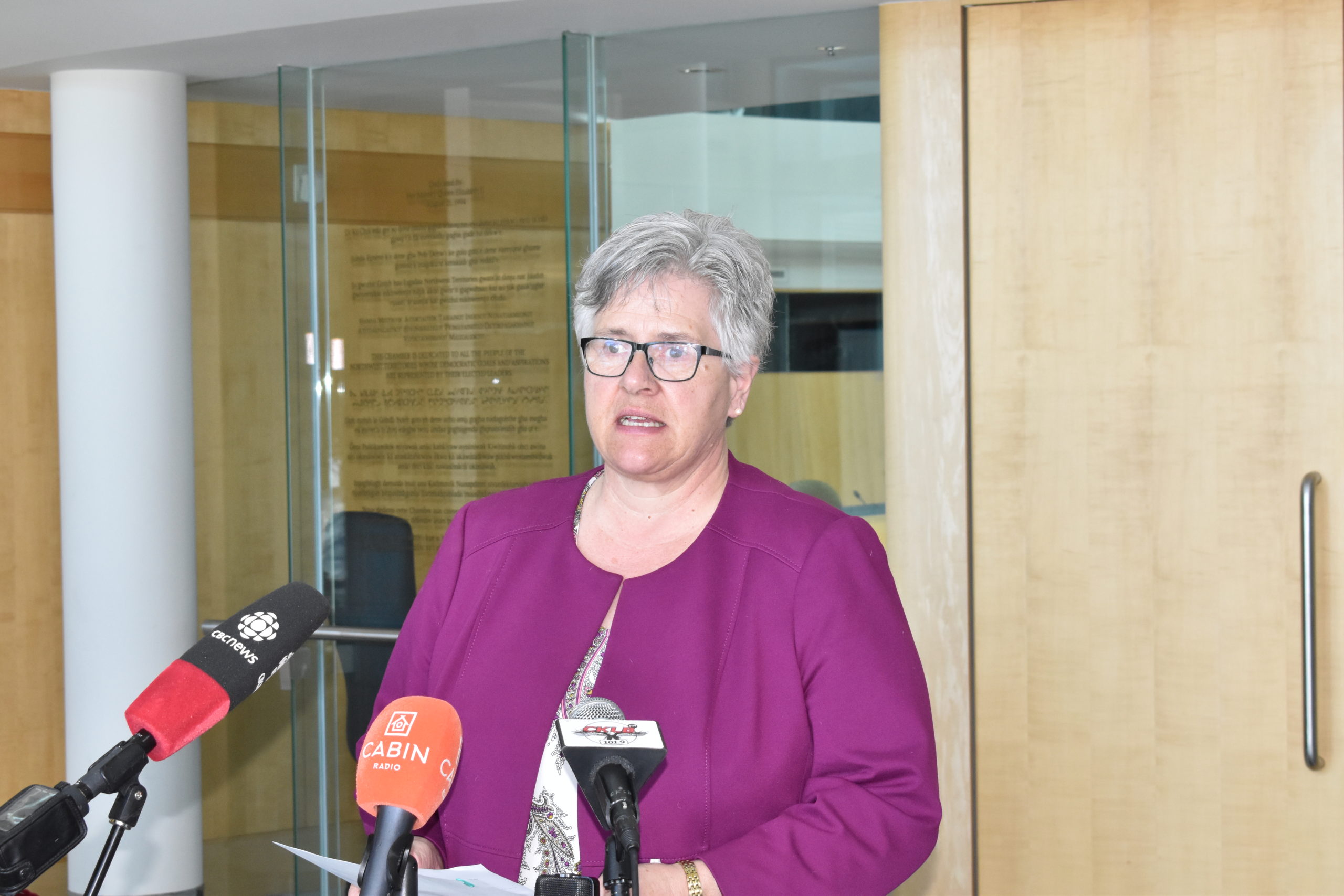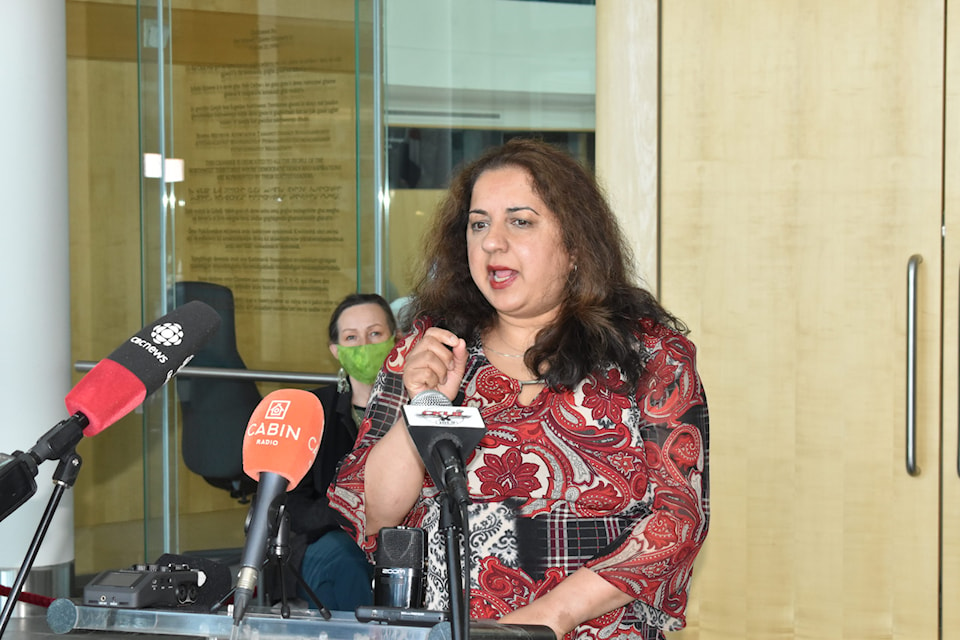The “vast majority” of the eight COVID-19 cases in the outbreak at N.J. Macpherson school in Yellowknife are children, said chief public health officer Dr. Kami Kandola.
In a news conference on May 3 at the Legislature, Kandola told reporters that the initial case of the outbreak on May 1 involved one individual in one class. The infection then spread to all grade levels at the Junior Kindergarten to Grade 5 school, she said.
Eight cases are now confirmed, with an additional 12 probable cases, of which nine have already been confirmed with ID NOW testing. That marks an increase from the six cases and 10 probable infections announced late at night on May 2.

The outbreak led to the closure of all schools in Yellowknife on May 3 and the introduction of mandatory masking indoors in the city.
On brink of community spread
Kandola said that although Yellowknife is on the brink of community spread of COVID-19, for now the situation remains an outbreak that is contained in the cluster connected to N.J. Macpherson.
“We were able to find this cluster quickly and have the households isolate. At this point no other school has met the definition of an outbreak. This outbreak isn’t connected to what happened at St. Patrick’s,” Kandola said, citing one individual who attended the high school on April 19 and tested positive for COVID-19.
The St. Patrick’s case also differs in that the exposure involved was narrowed down to a specific time frame, 40 contacts were isolated and the virus hadn’t spread further.
With N.J. Macpherson, students, staff and volunteers attended the school over the last week while there was an active COVID-19 case. Transmission occurred among eight people, more than the two cases required to meet the definition of an outbreak, Kandola said.
The nature of the N.J. outbreak called for what Kandola compared to the “circuit breaker” measure of closing all schools.
“Given the number of exposed close contacts (in the outbreak), who are likely incubating the virus and not becoming symptomatic, we wanted to prevent those students and staff from going into schools with a large unvaccinated population.”
Kandola acknowledged a shift in the isolation policy for vaccinated individuals in relation to the N.J. outbreak.
In addition to all students, staff and volunteers who were at the school during the week of of April 26-30 and deemed close contacts, their household members must also isolate even if they're already vaccinated.
N.J. cases ‘probably’ U.K. variant
Kandola said the cases in the outbreak are “probably” a COVID-19 variant because of the way cases have spread, likely the U.K. variant due to its predominance in Canada.
“That’s what we’re probably going to see in a week or two,” she said.
The outbreak is tied to the cluster of five COVID-19 cases diagnosed in April, which were rooted in the positive signal for COVID-19 detected in wastewater sampling as announced on April 20.
“I’m thankful that four of those fives cases have fully recovered,” she said.
Although Kandola acknowledged that closing all schools is a strong measure, she said health authorities don’t anticipate the outbreak will last very long.
“We’re testing, isolating cases and contract tracing and the the faster we do that the faster we can get it under control. This isn’t going to go on for weeks,” she said.
Vaccine exchange to help immunize teens
Health Minister Julie Green, who spoke alongside Kandola at the media event noted there is a lull in vaccine uptake in the NWT and she encouraged residents to contact their health centres so they can be vaccinated.
Green announced that the GNWT is looking into a vaccine exchange with other provinces, in which the NWT would give Moderna doses in return for receiving Pfizer-BioNTech doses.
“(It is) approved for people age 16 and older and is expected to expand to include teens 12-15 in the near future,” Green said. “It will allow for greater vaccine coverage. Introducing a second product into our vaccine inventory allows for more flexible vaccination program.”
Territorial medical director Dr. AnneMarie Pegg said the GNWT is looking into the vaccine exchange with British Columbia.
The NWT would target 16 and 17 year olds with the Pfizer-BioNTech vaccine, she said.
We don’t kow the exact number of doses the NWT would receive, but Pegg said it is hoped vaccinations can begin in the coming weeks.
Asked if the addition of Pfizer-BioNTech vaccinations would change the NWT herd immunity target, which ranges between 75 and 85 per cent, Kandola said there isn’t one exact target yet.
“But having the population for 16-17 year olds immunized will improve our risk around outbreak spread. Also we will know soon about expanding vaccinations for 12-15 year olds. In total, with 16-17 year olds we’re looking at about 3,600 students, in addition to the adults we can immunize. It’ll improve our ability to control the spread of COVID-19. We look forward to a Health Canada announcement on this.”
